This website uses cookies so that we can provide you with the best user experience possible. Cookie information is stored in your browser and performs functions such as recognising you when you return to our website and helping our team to understand which sections of the website you find most interesting and useful.
Select each route on our map of Aragón to obtain information
Slow Driving, when your destination is the road itself
Enjoy the trip, without being in a hurry, without speed. Just you, marvellous surroundings and the road.
Open the windows, feel the air, feel every curve. Enjoy the colours, the landscapes, the smells and corners that you didn’t think existed.
Aragon is the perfect place for it, with roads that run through different and spectacular places that on occasions will make you doubt if everything you see could be found in the same region.
Slow Driving routes in Aragon
Discover the 7 unique routes where you can enjoy Aragon and its surroundings.

Aragon Kings Route
Aragón is a unique destination offering attractions difficult to ignore: An unrepeatable experience in a unique destination. You can discover this by taking the Aragon Kings Route, which crosses Aragon from north to south, evoking the historical advance of the formation of the territory of Aragon.
From the mythical Somport Pass, the historical entrance to the Kingdom, opened in 1035 in the Pyrenees valleys by its first king, Ramiro I, this exciting route extends through spectacular mountain landscapes, high Pyrenean peaks, valleys, crop fields, extensive countryside and vineyards, vibrant cities and some of the most beautiful villages in Spain.
The second king, Sancho Ramírez, founded the first city of Aragón, Jaca, where you will find incredible Romanesque architecture. The Kingdom expanded to the south, as you will discover on your trip: Pedro I incorporated Huesca; Alfonso I, the cities of Zaragoza and Daroca; and Alfonso II, the first King of the Crown of Aragon (son of Queen Petronilla and Prince Ramon Berenguer IV), who incorporated Teruel, the city of love, modernism and Mudejar.
In Aragon, the living history of Christians, Jews and Muslims, forms an air of hospitality and harmony. Escaping the routine and travelling through Aragon is to enter an endless world of sensations, as each location hides a different story where tradition, adventure and modernity are the stars.
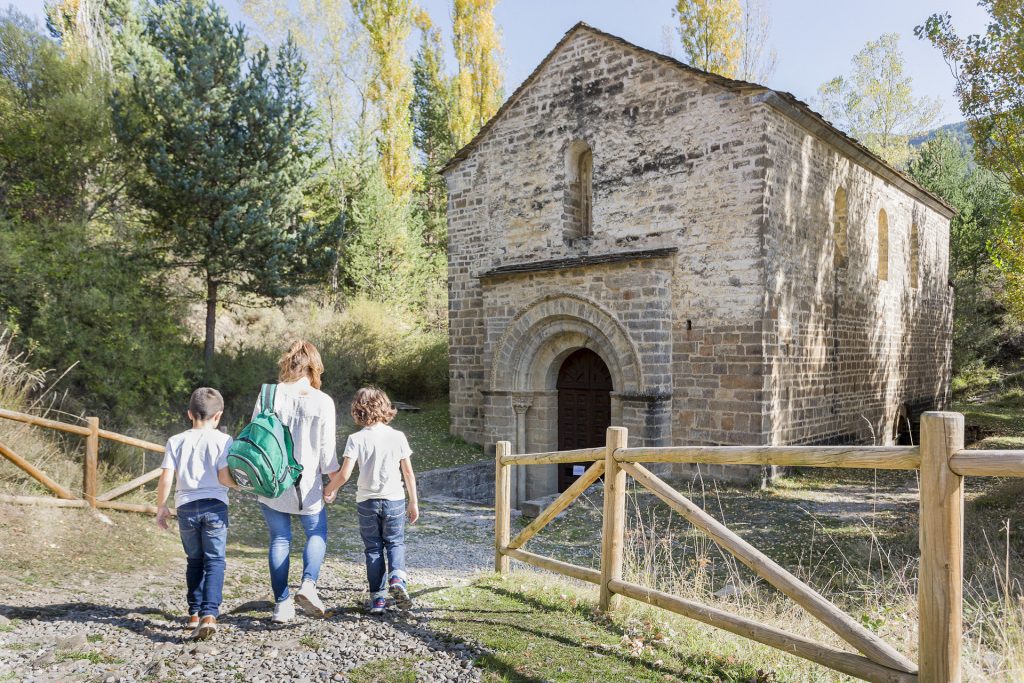
Origins of the Reino Route
This route leads us to the greenest valleys of the Aragonese Pyrenees: Hecho and Ansó. The Atlantic influence on the climate, with more rain and milder temperatures, together with the lower altitude of the mountains, give these valleys a softened aspect that contrasts with the rest of the Aragonese Pyrenees.
The leisurely tour of these beautiful places will also allow us to discover the origins of the Reino de Aragón, by visiting places such as the impressive Monasterio de San Juan de la Peña with its royal pantheon and the valleys that resulted in the birth of Aragon.
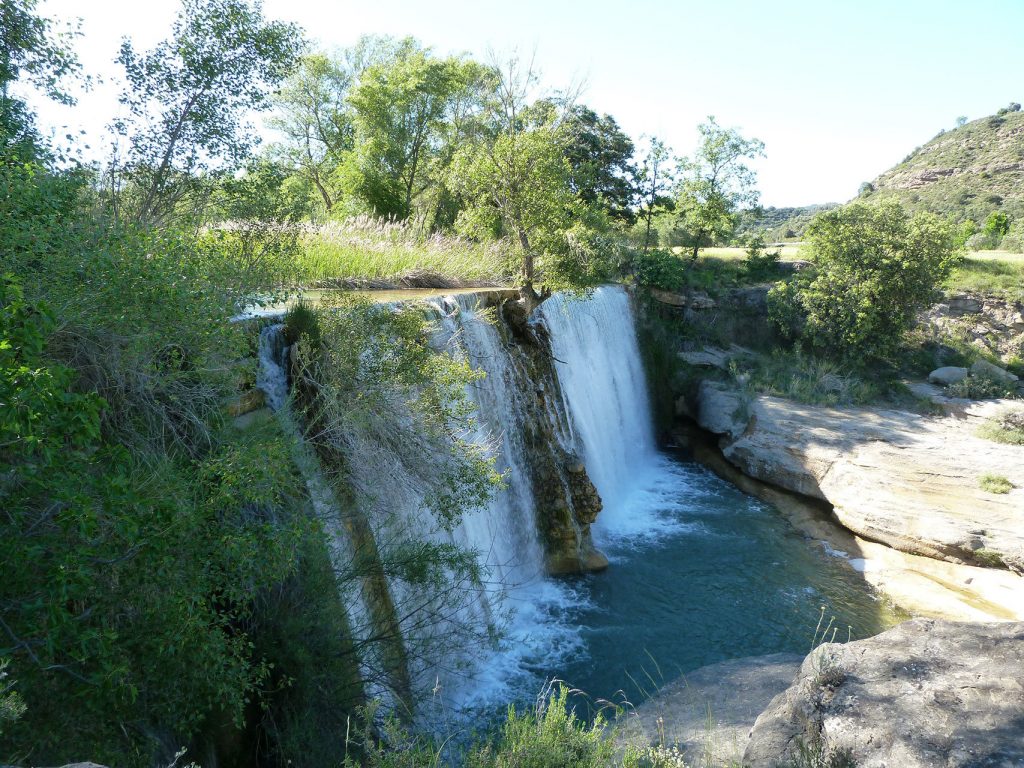
Secrets of the Pre-Pyrenees route
The Pre-Pyrenees charms everyone who visits it and on this route we will discover some of the secrets of the Aragonese Pre-Pyrenees. This mountainous strip is not only the prelude to the emblematic peaks of the Pyrenees, but an area of great scenic and cultural value in itself that should not have any envy of the Pyrenees, because the beauty of its landscapes combines a great historical, cultural and artistic heritage.
Here, history has left its mark on medieval towns, Romanesque churches, walls, towers… and nature has done the rest by leaving behind canyons, gorges, rivers, creating varied landscapes for those who seek something different. In its expanse, natural areas stand out, such as the River Vero Cultural Park or the Natural Park of the Mountains and Canyons of Guara, and a small inclusion in the UNESCO World Geopark of Sobrarbe-Pirineos, which consists of natural surroundings of great beauty and variety harbouring history and art in equal measure with examples such as the rock art of the River Vero, declared a World Heritage Site by UNESCO.

Route of the Castles
This route runs through the heart of the regions of Las Cinco Villas and La Hoya de Huesca. The mountains of Biel, Luesia, Luna and Santo Domingo are the pre-Pyrenean foothills that extend between the provinces of Huesca and Zaragoza, framing the beautiful villages full of art and history. It is a land of borders between Christians and Muslims, and, later, between Christian kingdoms.
Typical corners, churches, castles, medieval routes or popular architecture, here Romanesque features shine in all their splendour, like in places such as Sos del Rey Católico and Uncastillo. Beautiful and unsuspected spots, cereal plains, mountains, valleys, rivers and forests in surroundings that are dominated by the force of nature. And the Santuario de Monlora, raised upon the plain of a hill, it becomes the perfect balcony to look out over these lands. No place escapes the variety of colours and shades that are so typical of a diverse landscape that changes with each season.

Heart of Moncayo Route
This route is dominated by the imposing mass of Moncayo, a lofty and isolated mountain that the Romans called “Mons Caius”. This giant, with its almost perpetual snow, stands as a visible border between the Castilian plateau and the Aragonese steppes of the Ebro depression and is the maximum height of the Iberian system. Standing more than 1,500 metres in altitude, the vegetation varies from Mediterranean species to the high mountain ones.
This amazing gradation of different bioclimatic levels, turn this mountain into an authentic manual of geobotany. Municipalities such as Tarazona, San Martín de la Virgen del Moncayo or Santa Cruz del Moncayo, can be points of departure to discover this beautiful Natural Park. Its surprising beech forest is one of the southernmost in Europe and makes autumn the most spectacular time of year to appreciate the multi-coloured richness of its forests. Towns such as Calcena or Purujosa give their name to the southern slope or “the hidden face”, which is the least known of the Moncayo.

Universal Mountains Route
The region of the Sierra de Albarracín is a territory of recondite landscapes and architectures with a strong presence. These mountains hide impressive landscapes arising from a difficult orography, which are articulated around a varied set of ravines, canyons, rocks, valleys and extensive forests of conifers, junipers and holm oaks. This beautiful natural space was the cradle of primitive prehistoric communities, which expressed their lifestyles in a graphic way in important samples of rock art, the remains of which are grouped in the collection of Rock Art Coverings of Levantine style of the Mediterranean Arc, and have been declared World Heritage, forming the Cultural Park of Albarracín. Also in its municipalities we can discover the traces that the Roman Empire left behind on its way through the region. A quiet and pleasant tour to enjoy the peace that nature offers.

Silent Pass Route
This route explores the wild lands of the Maestrazgo and the mountains and valleys of the Gúdar-Javalambre region. These lands are home to remarkable historical legacy and a rich architectural and cultural heritage that gives the region its own unique character. The towns and villages of the Maestrazgo are perched on a rugged terrain marked by mountains, ravines, formidable buttes and narrow, fertile meadows. Its extensive pine groves, highlands, narrow riverbanks and bare rocky cliffs create an ample range of natural spaces with significant ecological and scenic value. The Gúdar-Javalambre region is marked by a mountain massif that belongs to the Iberian System: the Sierra de Gúdar and the Sierra de Javalambre. This is a truly stunning region home to picturesque walled medieval villages, Romanesque and Gothic churches and chapels, castles, and medieval bridges. A route along which every discovery is an unforgettable experience.
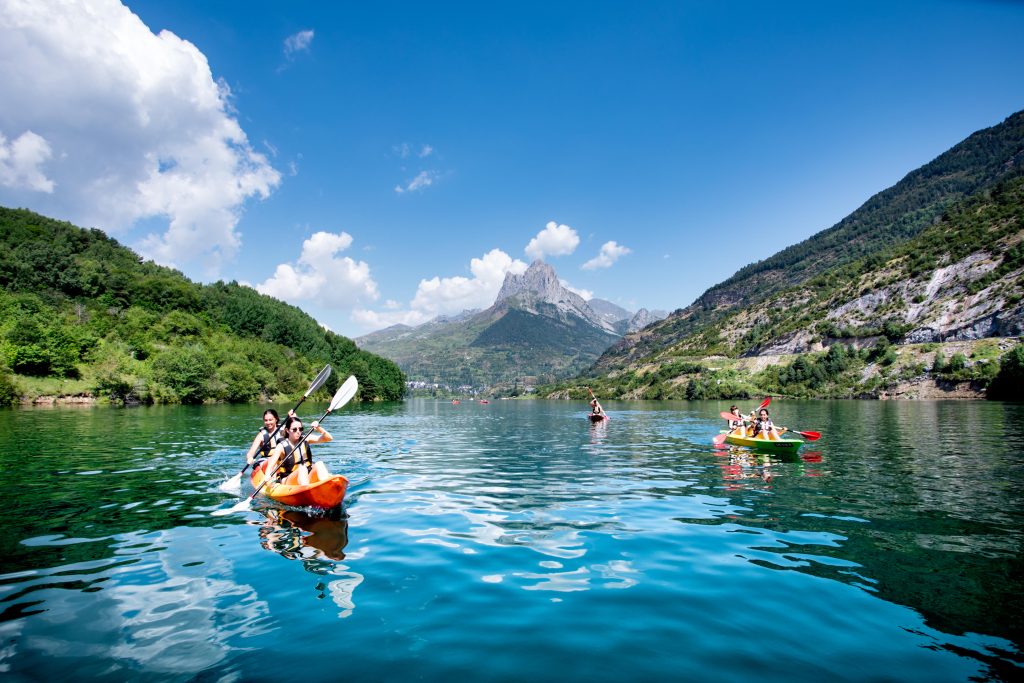
The wonders of the Tena Valley and the Serrablo Region
This route takes us to the Alto Gállego region to discover the magic and charm of the Pyrenean landscape. The headwaters of the Gállego River and its tributaries are the main axis of the region. South of the river lies the Serrablo region, where we can enjoy its beautiful Romanesque churches, such as those of Lárrede, San Juan de Busa, Oliván…. We will also enjoy a magnificent view of the valley from its various lookout points: Forests, lakes,… and the beautiful Lanuza and Búbal reservoirs. The great wealth of rivers makes the Alto Gállego region the perfect place for practising exciting sports activities, as well as for travelling through countless hiking and cycling routes…. We will visit charming villages with typical Pyrenean architecture; we will enjoy ourselves with the family while observing animals in semi-freedom in Lacuniacha or feel the thrill of the spectacular rope slide in Hoz de Jaca. And if you are looking for relaxation, there is nothing better than skiing in the Formigal and Panticosa resorts or bathing in the thermal waters amidst a spectacular landscape.
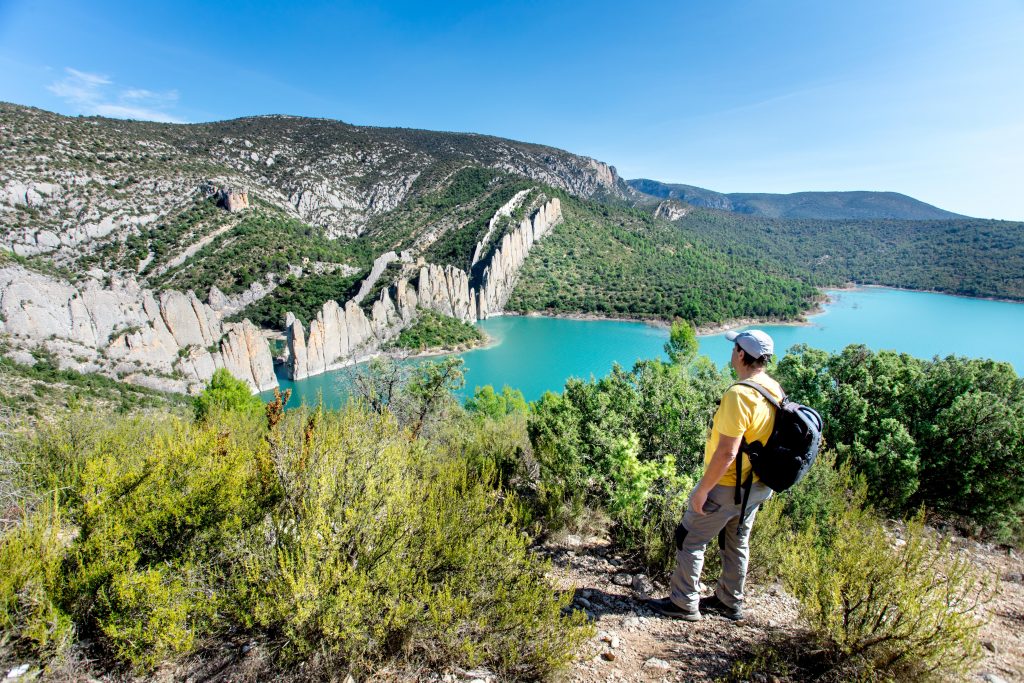
Unusual Pre-Pyrenees Route
This route takes us mostly through the Sobrarbe and Ribagorza regions. Here we can discover the highest peaks of the Pyrenees, where the last glacial foothills dominated by Aneto (the highest peak of the range) survive. It is a privileged area where impressive landscapes converge, surrounded by wild nature, narrow valleys and deep gorges. On this route we can also visit a rich and varied cultural and monumental heritage: two medieval villages, a Chinese wall, a Buddhist temple, a path carved into a rock face, a Renaissance village and a Templar castle are the wonders one can find in this exotic and exceptional route through the eastern Pyrenean foothills of Aragon.

Desert and Carthusian Route
This route runs mostly through the heart of the Los Monegros region. Finding one of the largest steppes in Europe in an area as green as Huesca means visiting one of nature’s wonders: the wonder of diversity. An impressive landscape that transforms into a variety of shapes and colours before our eyes. The Los Monegros steppe has one of its main symbols in the “torrollones,” which are fantastic geological formations created by the erosion of centuries, in sediments that constituted the sea bed millions of years ago
Los Monegros make an ideal destination for observing the fauna and flora of the steppe, but also for lovers of history, traditions, gastronomy, peace and adventure. Enclaves such as the Monastery of Sijena, the Cartuja de las Fuentes, the Orwell Route in Alcubierre, the Monoliths or Torrollones of Piracés and the Sariñena Lagoon are essential for discovering this amazing area.

The Ebro River, Goya (The Painter) and The Memories of The Spanish Civil War Route
This route starts in the Campo de Belchite region and continues from Quinto to Mequinenza, accompanied by the Ebro River. The Ribera Baja del Ebro preserves Roman and Visigothic sites and a rich Moorish heritage. The river, as it flows through these lands, is also crossed by several bridges. In the past, however, communication between the banks was by boat. Today we have only the barest of evidence of them in the form of pontoons and towers. Weirs marking the section of the river, water wheels, ditches, wheels, water pipes, mills, hydroelectric power stations, dams, breakwaters, pontoons…. can be found on the banks in these municipalities. On this route we will follow in the footsteps of one of the universal geniuses of painting: Francisco de Goya, and we will take a close look at our recent history in Belchite. We can also admire the monumental Iberian site of Azaila, the Rueda monastery, the impressive Mequinenza reservoir, the “Sea of Aragon” or the historic city Caspe.
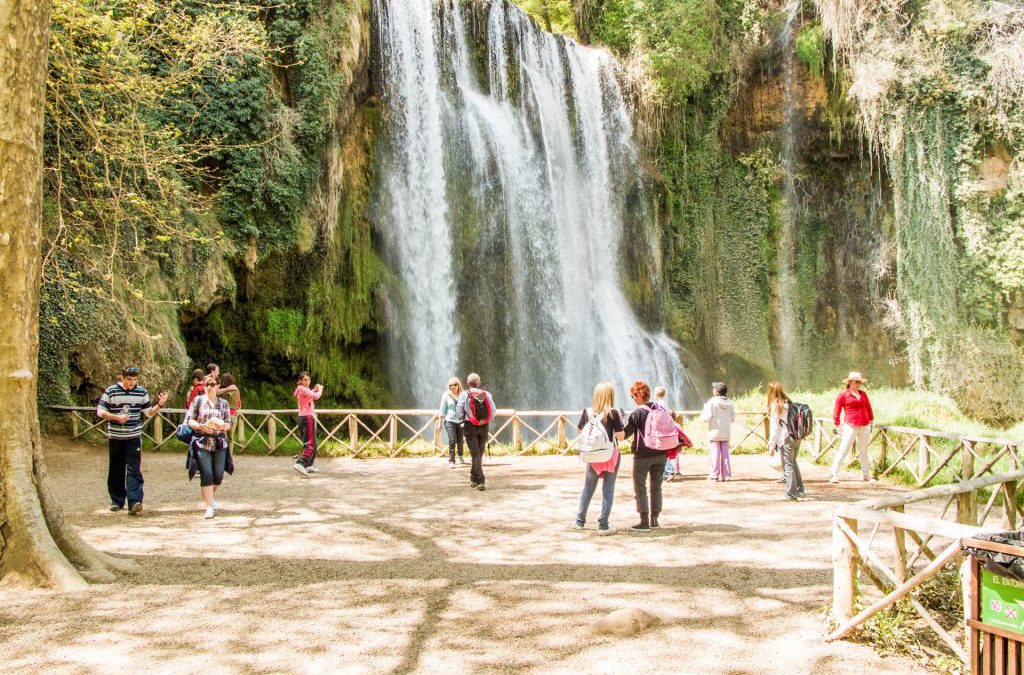
Ruta del Agua y del Mudéjar
En esta ruta descubriremos zonas de impresionantes contrastes con una inigualable variedad paisajística y un territorio marcado por la presencia del agua. Aquí confluyen las altas cumbres que vigilan el Moncayo con las maravillosas afloraciones de agua que dan vida a los balnearios y al exuberante Monasterio de Piedra. En esta comarca la naturaleza deja también paisajes tan hermosos como los de las Hoces de los ríos Jalón, Piedra y Mesa o la fascinante Sierra de Armantes. La comarca guarda decenas de soberbias fortalezas-castillo y murallas. Pero el enorme patrimonio que atesora no acaba aquí. En esta ruta descubriremos espléndidos ejemplos de plazas porticadas, palacios renacentistas o las pinturas del genial Goya en Calatayud. Y además brillan con luz propia espectaculares torres e iglesias mudéjares declaradas Patrimonio Mundial como las de Cervera de la Cañada, Torralba de Ribota o Aniñón (verdaderas joyas del arte mudéjar aragonés). Desde las ruinas de la romana Bilbilis hasta los bellos balnearios decimonónicos de Alhama de Aragón, son multitud los magníficos enclaves que nos ofrece este territorio.
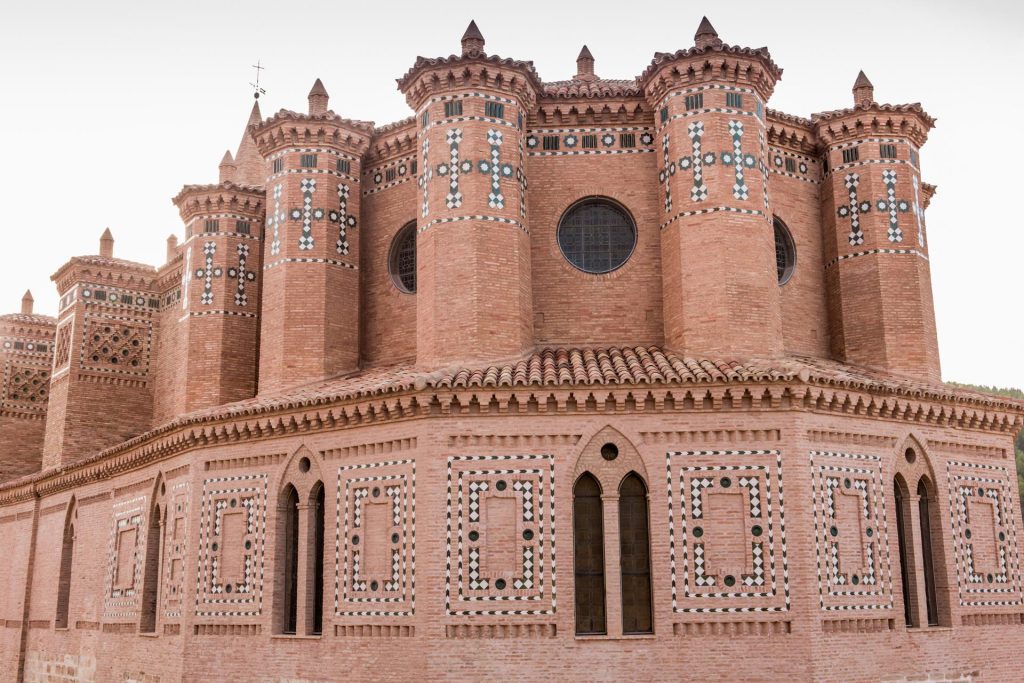
The Route of the Magic Corners of Teruel
On this route, which takes us through several regions of the province of Teruel, we can discover pretty corners, beautiful natural landscapes, monumental buildings…. In Alcañíz we will be surprised by the splendid castle of the Calatrava Order and in Calanda we will follow in the footsteps of the great director Luis Buñuel. Here, too, we find the typical neveras in the “Routes of the Vaults of the Cold” – buildings where snow was once stored and turned into ice. We also find places and villages that are part of the spectacular Holy Week of the Bajo Aragón. In Molinos we can take a nice walk underground and admire the beauty of the Grutas de Cristal (crystal caves), and in Escucha, also 200 metres underground, we may also experience the hard life of the miners. This route takes us through some sections of the Río Martín Cultural Park and lets us discover true treasures of the Mudéjar heritage in the churches of Montalbán or Olalla. At the end of the day, we can enjoy the well-deserved relaxation in the spa town of Segura de Baños.
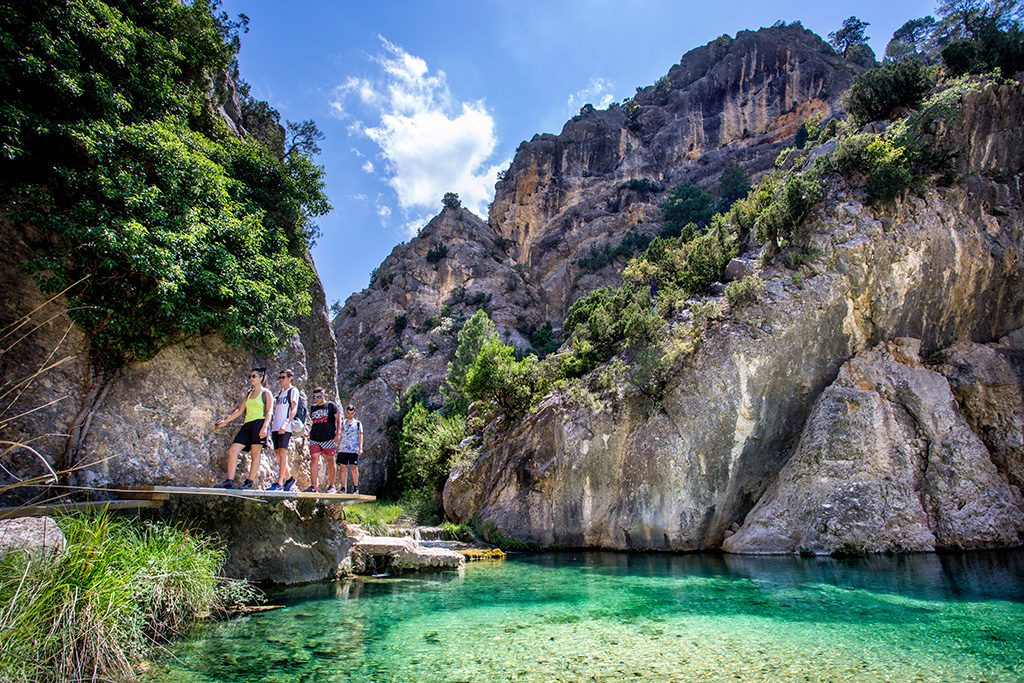
The Route Of The Aragonese Tuscany
This route takes us through the Matarraña and Bajo Aragón regions. Matarraña is a beautiful and fascinating area with enough merits to be a reference point for relaxation, disconnecting and slow tourism in Spain. Stone villages, medieval and charming, an impressive cultural heritage and a fascinating and peaceful Aragonese-Mediterranean nature make this route one of those that you will surely seek to enjoy the local, the bucolic and the authentic.
Five villages on this route are located in the Bajo Aragón region – a very special region with incredible landscapes and a character that has been developed over the centuries, as demonstrated by Easter Week, which has been declared of International Tourist Interest. The “Route of the Iberians of the Bajo Aragón” or the “Route of the Vaults of the Cold” (former chambers drilled into the earth to store ice) are other attractions of this beautiful region.





